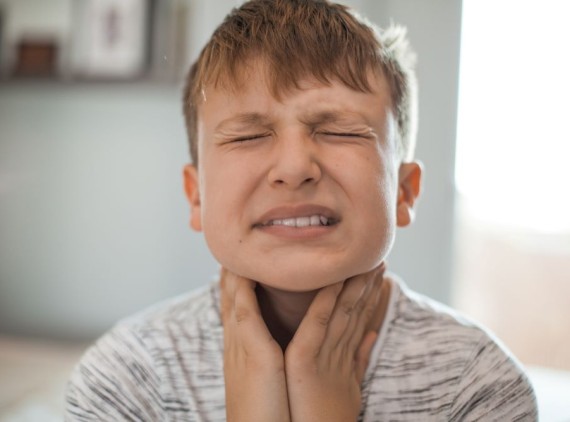As a pediatric otolaryngologist with Phoenix Children's Ear, Nose & Throat (Otolaryngology and Head & Neck Surgery) department, one of the more common surgeries I perform is a tonsillectomy and adenoidectomy (also known as an adenotonsillectomy). There are many reasons we perform this surgery.
The most common reason is for sleep disordered breathing in children. This often manifests in a sleeping child with snoring, gasping or catching the breath, pausing in the breathing, restlessness, sweating, and poor nasal breathing. There may also be an association with enuresis (bedwetting) and night terrors. These symptoms are also concerning for sleep apnea in a child. Sleep apnea in children is associated with attention issues, hyperactivity, learning difficulties and behavior problems. In severe cases, there can be complications related to the heart and lungs.
There are many other reasons we must consider surgery of the tonsils and/or adenoids including recurring throat or tonsil infections, chronic adenotonsillitis (chronic inflammation of the tonsils associated pain, tonsil stones and bad breath), recurring ear or sinus infections, etc.
The most common questions I receive when discussing the surgical need for removal of this tissue are:
- What are tonsils and adenoids?
- Where does this tissue does grow and what is its function?
Lastly, and often most important for someone considering having them removed:
- Do I need them?
Well, here are the answers:
Where are tonsils and adenoids?
The tonsils are pads of tissue (small organs) located on either side of the back of the throat. The adenoid is a similar pad of tissue located behind the back of the nose in the throat. They are strategically positioned to serve as secondary lymphoid organs, initiating immune responses against germs invading the body through the mouth or nose. However, their locations can lead to blockage of breathing through the nose and mouth when enlarged (especially while sleeping at night).
What are tonsils and adenoids?
Both tonsils and adenoids are part of the lymphatic system and composed of lymphoepithelial tissue. Tonsils were once thought to be useless and now obsolete through evolution. However, the tonsils and adenoids are filters that help trap germs which enter the throat and nose. These pads can become a reservoir for infection which leads to dysfunction in their ability to filter and fight these “invaders.”
Do I need my tonsils and adenoids?
Fortunately, the body has many different ways to fight infections and inflammation. In patients with chronic and recurrent inflammation or infection of the tonsils, studies have demonstrated there is impaired function of the cells within the tonsils. Once this impairment occurs, the tonsils are no longer able to provide local immune protection, nor can they appropriately reinforce the immune system. Thus, it appears it can be beneficial to remove diseased tonsils. One thing to note, according to the American Academy of Otolaryngology - Head and Neck Surgery, “There are no studies to date that demonstrate a significant clinical impact of tonsillectomy on the immune system.” In appropriate candidates, adenotonsillectomy is very successful at treating children with sleep apnea and/or chronic or recurring infection.
Surgery Details
Adenotonsillectomy surgery takes approximately 45 minutes. The tonsils and adenoids are removed through the mouth. Most patients are monitored for a period of time after the procedure prior to going home on the same day of surgery. Patients under age 3 years, with severe sleep apnea, morbid obesity and/or other complex medical issues are frequently observed overnight.
It takes most patients 7-10 days to recover from tonsillectomy with adenoidectomy. Some patients feel better in just a few days, and some take as many as 14 days or longer to recover. Pain medication, appropriate for age, is provided. There are rare risks such as bleeding and dehydration which rarely require additional intervention in the recovery period.
If you feel your child may benefit from this procedure or you have any questions, our ENT team would be happy to visit with you and assess your little one.

